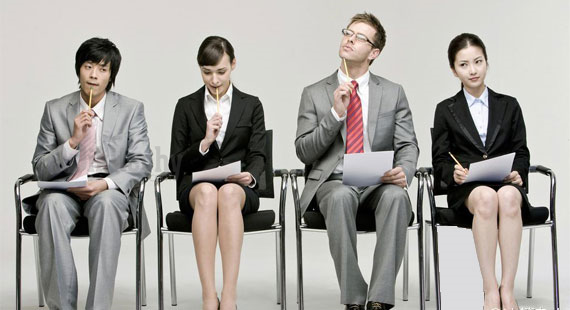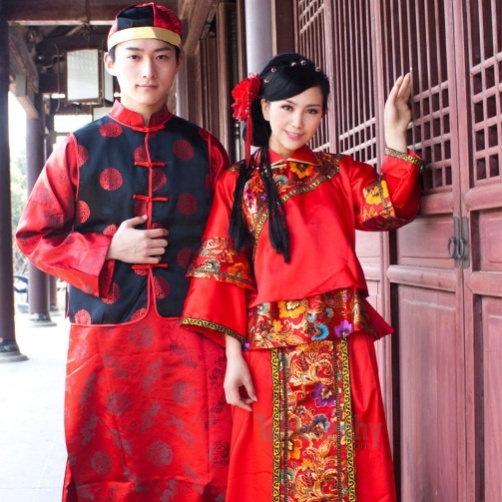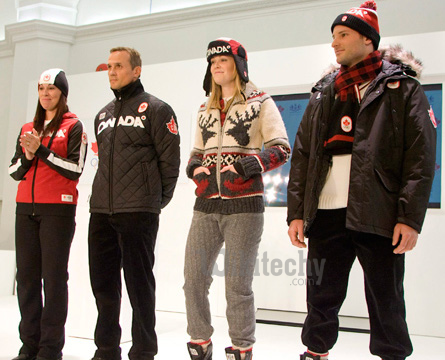
China Interview Outfits
China Details
- China people - Chinese
- China capital / capital of China - Beijing
- China language - Standard Chinese
- China population / population of China - 2015 estimate 1,376,049,000
- China currency - Renminbi
- China, officially called the People's Republic of China (PRC), is a unitary sovereign state in East Asia.
- With a population of over 1.381 billion, it is the world's most populous country.
- The state is governed by the Communist Party of China.
- It exercises jurisdiction over 22 provinces, five autonomous regions, four directly controlled municipalities (Beijing, Tianjin, Shanghai, and Chongqing), and two mostly self-governing special administrative regions (Hong Kong and Macau), and claims sovereignty over Taiwan.
- The country's major urban areas include Shanghai, Guangzhou, Beijing, Chongqing, Shenzhen, Tianjin and Hong Kong. China has a great power and has been characterized as a potential superpower country.
CHINESE DRESS CODE FOR JOB INTERVIEWS

- It is important to demonstrate good appearance as well as good manners at an interview.
- Dress neatly and conservatively. Tropical or lightweight clothing is acceptable in the summer in northern China and for most of the days in southern China.
- Men wear sport or tropical coats and ties in subdued colors. Slacks and open-necked shirts are generally suitable in the summer.
- Women wear conservative suits, dresses or pantsuits in subdued, neutral colors such as beige or brown. They should avoid heavy make-up and excessive jewelry.
- No caps, athletic shoes, sweats or unkempt clothes. Jeans, singlets, open shoes and thongs are never accepted. If the wind was blowing, comb your hair before making first contact at the reception. Take with you only a slim folder holding your job application documents and resumes. Do not carry a water bottle or coffee mug. Do not chew anything.
CHINESE DRESS CODE FOR JOB INTERVIEWS

- There are several important rules for proper business attire in China. First, you should never wear shorts. Shorts are considered appropriate for exercise and never for the workplace. In fact, even during the summer, you will rarely see shorts worn in China by anyone other than tourists.
- You should also avoid wearing bright fabrics, as bright colors are considered inappropriate in the Chinese workplace. You need to wear dark or muted colors. Both men and women should dress in a conservative manner. Blue jeans should never be worn in the workplace. Even if it is Friday, Chinese companies do not have a "casual day."
Business Attire for Women
- If you are a woman, special style rules apply. Chinese business women dress quite conservatively, and you should mimic this style. You should not wear anything revealing. If you choose to wear a dress, the hem needs to be below the knee or the dress is considered inappropriate. You should also wear a high neckline.
- Avoid wearing extremely high heels, regardless of what you are wearing. A shoe with a low heel is acceptable, but the heel must be extremely small. If your hosts are shorter than you, do not wear a heel at all. It will be considered a sign of disrespect and rudeness. Only closed-toe shoes are worn, such as pumps. Open-toe shoes are inappropriate for the Chinese workplace.
- You also cannot wear flashy or large jewelry, regardless of what you wear. If you choose to wear jewelry, choose pieces that are small and appropriate. Do not wear large earrings, large jeweled rings, or bulky necklaces.
- If possible, wear a business suit, and try to wear colors such as beige, brown, or navy. Sleeves on your shirt should be full or three-quarter length. Chinese women do not wear short sleeves in the workplace. A woman who reveals too much skin is considered offensive by Chinese businessmen.
- It is also frowned upon to wear too much makeup. If you choose to wear makeup, your makeup should be modest and natural. Never wear bright eye shadows. You should also avoid wearing nail polish. If you must wear nail polish, make sure it is not a bright color. Your nails should be neatly trimmed, and fake nails should not be worn to any Chinese business event.
Business Attire for Men
- If you are a man, the proper business attire in China is not that different from conservative companies in the West. You should wear a conservative suit and tie. Always wear a tie, and choose ties in neutral colors. Avoid bright, flashy ties and patterns.
- In China, you also need to keep your suit jacket on at all times. It is considered rude and inappropriate to remove the jacket during the meeting, and it will be thought of as a sign of disrespect to the company hosting you.
- You should wear a suit to any business social event. Even for formal events, a business suit is appropriate; tuxedos are rarely worn.
- Like shoes for women, only closed-toe shoes are worn by businessmen. Never wear casual footwear, athletic footwear, or sandals in an office environment.
- Don't wear jewelry other than a good quality watch and perhaps a wedding band. If you are meeting with a very important company, you should wear a nicer watch. If you don't own an expensive or a nice watch, do not wear a replica watch. It is likely that your host will be able to spot the fact that the watch is a fake. Instead, opt for no watch at all.
Getting Dressed
- If you have any doubts about the appropriateness of your outfit, it is best to dress as conservatively as possible. It is rare to offend someone by being too conservative, while it is easy to offend by wearing dress considered flashy, revealing or tasteless.
TRADITIONAL DRESS
- The cheongsam is widely regarded as the national dress of China. The snug, one-piece garment is available as a dress for women. Its male counterpart, the changshan, is similar, resembling a long shirt.
- Generally speaking, the traditional Chinese clothing, such as the cheongsam, is finely crafted and brightly colored. It was the dominant article of clothing in the country for thousands of years until the arrival of the Republic of China in 1912. At that point, many Chinese adopted the Chinese tunic suit, also known as a Mao suit.

- The various Chinese dynasties each boasted its own version of the cheongsam, often reflecting the colors and patterns popular in the art of a given time period.
- Today, most Chinese people wear the same type of clothing worn in the west, from casual clothing to formal business attire. Also as in the west, there is a wide gap between the styles of clothing worn by young people and those worn by adults. They reserve traditional garments for various cultural ceremonies, festivals and religious events.
- China is known in the fashion world for its modeling company New Silk Road Co., Ltd. Through this vehicle, the country is incorporating more cutting-edge western fashion into its cultural consciousness.
KINDS OF CLOTHES PEOPLE WEAR
- In everyday life, the Chinese wear modern clothes that are similar to any other culture throughout the globe, such as jeans and blouses, but still don traditional grab for certain festivals and religious ceremonies. The traditional costume depends on the area of China. For example, the people of Mongolia and Tu wear distinct costumes.
- Popular traditional costumes in China include Han Fu clothing, the Chinese suit or Tang Zhuang and the Cheongsam. Han Fu clothing has a long gown with a cross collar. This outfit has a sash in place of buttons. It represents Han culture during the reign of the Yellow Emperor.
- The Chinese suit, or Tang Zhuang, requires a male jacket in the style of the Qing Dynasty as well as coiled buttons. This suit is designed after Chinese styles, but is tailored in the Western style. The Cheongsam is an outfit for women, with a straight collar and coiled buttons on either side of the dress. The dress is usually constructed of linen, cotton and silk and, as of 2014, is the most popular traditional Chinese costume for women. For men, there is also the tunic suit, which was more popular during the 1940s through 1980s. However, it is still worn by some Chinese officials.
- chinese dress
- cheongsam
- chinese clothing
- qipao
- cheongsam dress
- qipao dress
- chinese wedding dress
- chinese costume
- cheap formal dresses
- cheap dresses
- cheap summer dresses
- plus size dresses
- cheap party dresses
- cheap dresses online
- black evening dresses
- white dress
- cheap evening dresses
- long evening dresses
- evening dresses
- summer dresses
- cocktail dresses
- flower girl dresses
- denim dress
- traditional dresses
- buy dresses online
- dress barn
- black dress
- flapper dress
- long summer dresses
- wrap dress
- bridesmaid dresses
- prom dresses
- formal dresses
- white party dresses
- homecoming dresses
- party dresses
- short formal dresses
- wedding dresses
- red cocktail dress
- little black dress
- short evening dresses
- winter formal dresses
- dresses
- yellow dress
- red dress
- pink dress
- casual dresses
- kimono dress
- asian dressing
- fancy dress
- long dresses
- sexy evening dresses
- japanese dress
Below are some of the hottest searches of the chinese people related to the clothing
FASHION IN CHINA

- Hong Kong clothing brand Shanghai Tang's design concept is inspired by historical Chinese clothing. It set out to rejuvenate Chinese fashion of the 1920s and 30s, in bright colors and with a modern twist. Other Chinese luxury brands include NE Tiger, Guo Pei, and Laurence Xu.
- In the year 2000, dudou-inspired blouses appeared in the summer collections of Versace and Miu Miu, leading to its adoption within China as a revealing form of outerwear.
- For the 2012 Hong Kong Sevens tournament, sportswear brand Kukri Sports teamed up with Hong Kong lifestyle retail store G.O.D. to produce merchandising, which included traditional Chinese jackets and Cheongsam-inspired ladies polo shirts.
- In recent years, renewed interest in traditional Chinese culture has led to a movement in China advocating for the revival of hanfu and the return of several elements of pre-Qing Chinese culture.
- People are really interested in the below category of dresses chinese style dress,,chinese silk dress,red chinese dress,chinese jacket,chinese cheongsam dress,chinese inspired dress,chinese qipao dress,chinese fancy dress,girls chinese dress,chinese dress for women,chinese style clothing,chinese outfits for ladies,chinese wedding dresses,chinese dress for girl,black chinese dress,chinese dress shirt,chinese formal dress,chinese dress qipao,blue chinese dress,cheap chinese dresses online,white chinese dress,ladies chinese dresses,chinese style prom dresses,chinese evening gown,authentic chinese clothing,chinese dress girl,chinese style dresses cheongsam,chinese dress traditional
